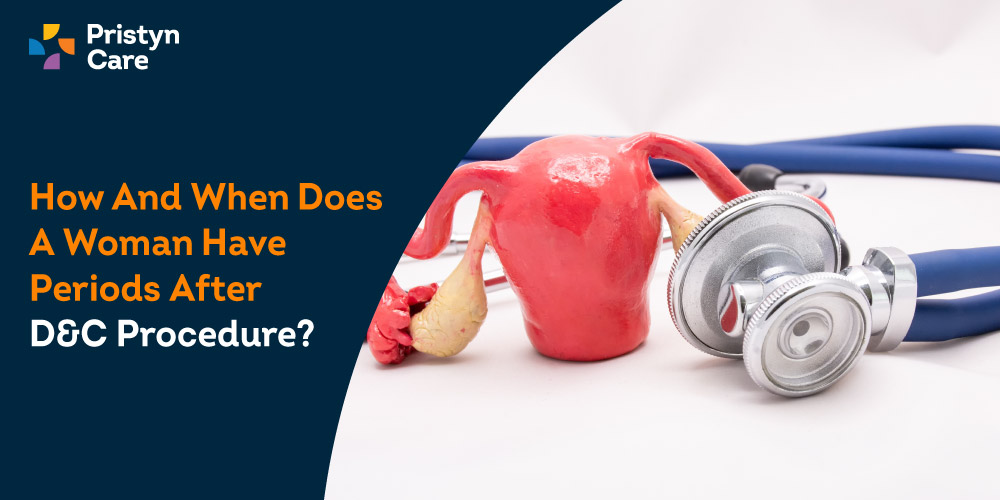
D&C or dilation and curettage is a surgical procedure in which the doctor opens the cervix of the female to get access to the uterus. This procedure of opening up the cervix is known as dilation.
Once the uterus is in reach, the doctor uses “a curette” to clear out any remnants of conception after a miscarriage from the uterus. D&C is also performed to diagnose and treat other uterine problems, like Abnormal Uterine Bleeding (AUB).
Table of Contents
Periods After a D&C

After a D&C, the female’s uterus builds up a new tissue lining. Due to this, her next period may come early or late. This may look like a vague statement, but the fact is that it is actually unpredictable when a woman will get her period after a D&C procedure.
Generally, the woman may have her period anytime in between 2 to 6 weeks after a D&C procedure. This is a variable timeline and it can be different for each woman.
When will a woman have Periods after a D&C?
A female’s hormone levels are different during pregnancy. After an abortion or miscarriage, the hormone levels will return back to normal more quickly if the miscarriage or abortion is done in the early stages of pregnancy. On the other hand, the hormone levels take a longer time to return to normal in case of abortion or miscarriage in the later stages of pregnancy. So, the stage or trimester of pregnancy determines how soon the female will get her period after a D&C. Other factors like regularity of periods before undergoing D&C also plays a crucial role in this respect.
Note- If the woman has not had her periods even 8 weeks after the D&C, she should consult her doctor at the earliest.
In rare cases, a woman may develop “Intrauterine Adhesions” or scarrings after undergoing D&C. The risk of build-up of scar tissues in the uterus higher for women who have had more than one D&C.
What to Expect After a D&C?

Most females are able to go back home after a few hours of undergoing a D&C and can resume their daily activities within a day or two after the procedure. There can be mild cramping or / along with light bleeding after the procedure.
When performed by a knowledgeable and experienced gynecologist, a D&C usually has no complications or risks. However, some females may still have complications when D&C is not performed properly:
- Heavy bleeding
- Uterus Perforation (when a small hole is accidentally made in the uterus from the instrument)
- Infections (uterine or vaginal)
- Allergies or Complications due to the anesthesia used
In case the female has pain, cramping, fever, or heavy bleeding after the D&C, it is advised to visit the gynecologist at the earliest.
Care after a D&C

The gynecologist strictly advises the patient to not put anything, including tampons, into her vagina. Other activities such as douching or sexual intercourse are also not advised until the female recovers completely. All these measures prevent vaginal infection and the weakening of the muscles.
A Word From Pristyn Care
The slow road to recovery, including getting your period after D&C may be frustrating. A female can have even more complications if she has had a D&C after a miscarriage or abortion. Consult your gynecologist in case there is intense abdominal pain, too many cramps or other symptoms such as severe bleeding after a D&C. Timely medical attention can save you from a lot of troubles. So, maintain a proactive approach in order to dodge any gynecological complications.
Also Read:







